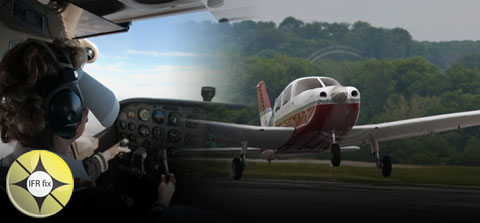
Routine instrument refresher flights usually start like this. Taxi out, run up, take off under VFR. In the climb, the CFII takes control briefly while you don your view-limiting headgear and bid farewell to sunlight.
Not today.
The mask already has you in its grasp, and you’re not even airborne. Today is your introduction to the instrument takeoff (ITO).
Haven’t done one?
Suggestion: Find a nice long, wide runway, and get your present or former CFII to put you through the paces of an ITO.
Even if you’re a pilot whose personal minimums prohibit departure under low conditions—let alone from a runway you couldn’t land on minutes later if necessary—much learning arises from this simple, exhilarating drill.
Now you’re sitting on the runway centerline in your analog-gauge Skyhawk, carefully aligning your directional gyro with the magnetic compass. Today, that DG’s most important role will be to act as the only substitute for the visual cue of that wide stripe of white paint during your takeoff roll.
Already your sense of priorities stirs: Thinking about this operation puts new focus on the instrument cockpit check task in the practical test standards, with its A-through-Q list of items to review, and the obvious price to be paid for error.
“Let’s adjust that heading indicator one more time.”
Cleared for takeoff, you add power—more gently than you have ever added throttle before—to keep evil influences from swinging your aircraft off heading. The rudder dance to keep the runway heading motionless under the bug quickens as you accelerate.
Make a smooth but deliberate rotation, please; this is no time to mush or bounce. Positive vertical speed and a convincingly upward trend on the altimeter confirm the climb. Keep tracking that runway heading!
OK, says the CFII, I’ve got control of the airplane. Take off the hood, look back, to see how well you tracked.
Not bad. Special congratulations on avoiding the eight “common errors in instrument takeoffs” described in Chapter 5 of the Instrument Flying Handbook.
Even if you never fly another instrument takeoff, it’s a safe bet that you will approach instrument cockpit checks with a higher level of performance and safety in mind—a nice payout on a modest investment in experiencing the ITO.
Earning an instrument rating is guaranteed to be one of the most challenging, rewarding, and fun projects a pilot takes on during a lifetime in aviation. Each week, this series looks at the IFR experience from a new perspective. Catch up on what you may have missed in the IFR Fix archive.



